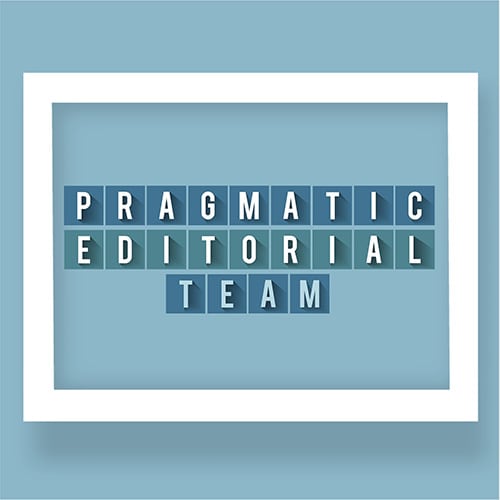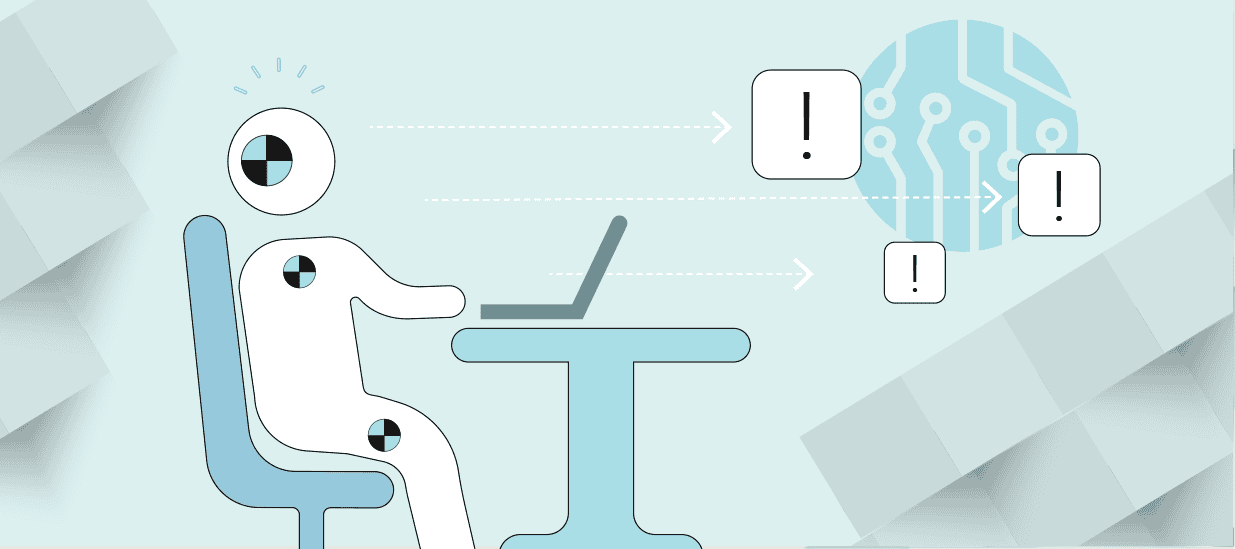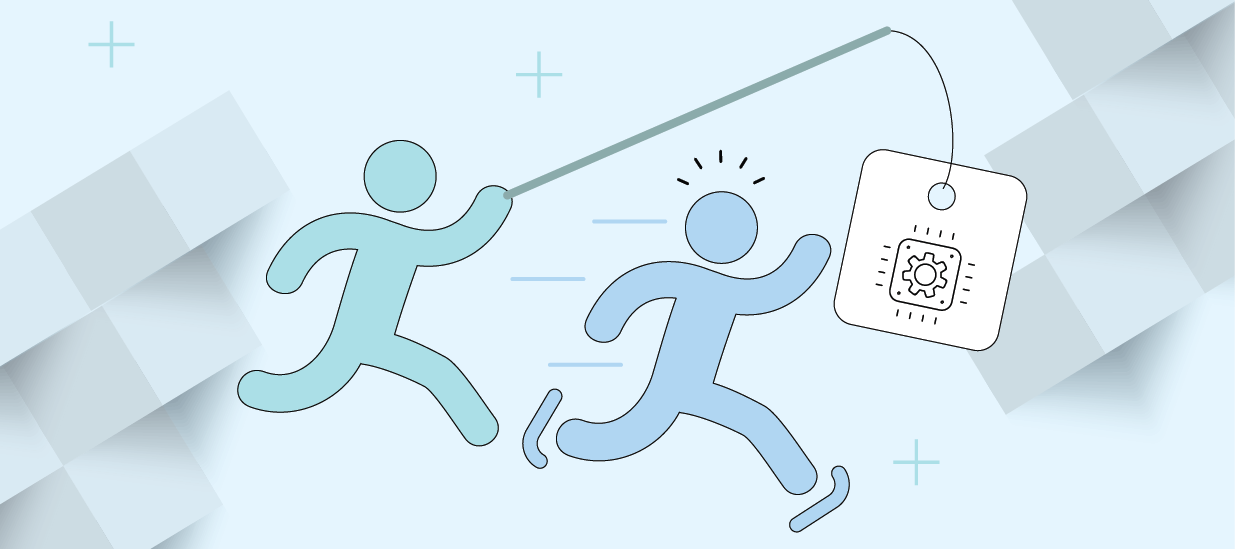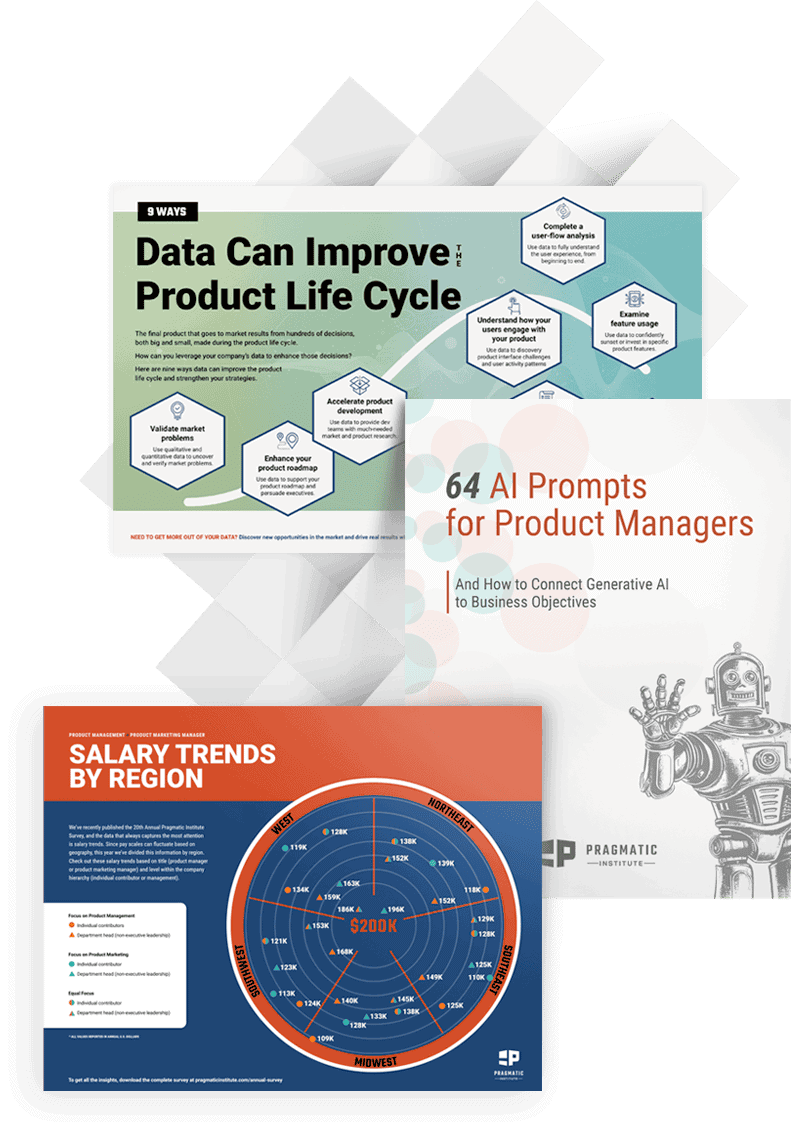7 minute read
You have an amazing product, but how do you tell the world it is different from all the rest? Product positioning is what you communicate to the market about your product, and getting it right is vital. Read why it matters, what can go wrong and learn how to write product positioning messages that resonate with buyers.
Product positioning focuses on conveying your product’s value to buyers, resulting in a family of documents that drives all outbound communications. What the world thinks about your product largely comes from the information within these documents, yet many times they are full of fluff and buzzwords.
On the other hand, when product positioning is done well, it becomes a powerful tool for companies looking to differentiate their products from competitors. It helps potential buyers more quickly understand how your offerings are different, why they are better and how they will help them. Effective product positioning also helps companies be consistent in their messaging across all channels and touchpoints.
Product positioning, when well executed, serves as a strategic compass, guiding companies to highlight their product’s unique value propositions in a crowded market. In this article we take a closer look at product positioning, what can go wrong, and how to do it right.
What is Product Positioning
Product positioning is important because it helps companies tell their story in a way that resonates with the target audience. It can also help to quickly and easily differentiate a product or service from what competitors are offering.
Product positioning results in a series of well-crafted documents focusing on the buyer and how your solutions improve their life. The trick to positioning is to understand the product’s value to the buyer. In other words, what problems can you solve for the buyer? Do you know the benefits your customers achieve with your products and services? Not sure? Ask.
Talk to customers and prospects, as well as sales reps who are on the front lines. Then, talk to executives who have a bird’s-eye view and can help you understand customer needs from a broader perspective. This will provide essential insights that inform the positioning process and, ultimately, result in effective positioning statements.
Once you have gathered your customer insight, it’s time to create an effective product positioning statement that clearly explains how customers benefit from your product offerings.
A product positioning statement should provide clear guidance on the product’s target market, key benefits, competitive advantages, and expected customer outcomes.
When positioned properly, messaging should be succinct and easily understood. While you want to be concise, make sure that your statement is clear and detailed enough for people to understand your product’s or service’s value.
What is Product Positioning Takeaway
Good product positioning is unique, tells what problems the product solves and why it does it better than the competition.
How to Solve Product Positioning Problems
Much of the writing we see in marketing materials seem insincere. It’s as if the writer wants to fool the reader into thinking the product is more important than it is. Or that the product solves problems better than the competitor’s when it doesn’t. This type of insincere messaging is one of the top product positioning problems.
For example, many organizations create cute or clever taglines that don’t convey meaning. But cute doesn’t work in B2B (and maybe not in B2C either). What does General Electric Company (GE) expect us to think about its ‘Imagination at Work’ tagline from 2005?
Can we use GE products to spark the imagination? Are their products only found in the workplace? A Google search for this phrase generates over 374 million pages ranging from childcare facilities to books. How meaningful is the phrase to consumers of GE products? The current slogan of GE is: “We Bring Good Things to Life.” This is a bit more tangible, especially given their industry.
The lesson here is not to be too clever in your positioning. Your words must convey a focused message that will resonate with the target audience. Product positioning should provide clear differentiation from competitors and communicate how your product or service meets customer needs. Don’t try to fool the market into thinking you are something you’re not or can do something you can not.
And remember, if your product is inferior, no amount of product positioning can fix it. A product must be adequate for the market to succeed; no amount of marketing can overcome this truth.
Solving Product Positioning Problems Takeaway
Your messaging needs to be sincere, unique and clearly speak to the problems your product solves.
Solving Problems Versus Speaking Specs
Many product managers and other professionals use a lot of technical jargon, but don’t let that jargon make its way into your product positioning documents. You do not want to assume that the reader can connect the dots between the specs of a product and the solution to their problem. You also want to make it easy on sales to understand how the product solves problems without requiring them to interpret how it solves them.
How unfair to both buyer and seller! Product positioning documents, marketing materials and sales tools should explain the value of a product. The specifications are only there to support the promises.
Examples of product descriptions
Compare these two product descriptions posted on eBay for the same product:
First, the specification-oriented listing:
“This is a trailer-mounted z-boom model # TMZ-34/19. This is a 2000 model Genie. This is a great value and innovation in the trailer-mounted boom market. It is all-electric, which is economical, and it has four new batteries and new tires. It has a spare tire. The working height is 40 feet. 19 ft horizontal reach, articulating jib has 130-degree working range, Compact 34-inch width, 500 lb. lift capacity, Large 8 in outrigger footpads, Junction box, shelf, and tie-down attachment points to accommodate generators up to 2500 W, Non-marking footpad covers, AC outlet in the platform. It also has Surge Brakes, Parking Brakes, Horn.
I am the original owner, and this has only been used about 40-50 times. It is in excellent working condition. I own a sign shop and have used it when working on billboards. If you have any additional questions, you can email me, and I will get back to you. I will also be willing to meet someone within a 300-mile radius.”
Now a problem-oriented listing (for the same product):
“This is an excellent lift because you don’t have to maintain a gas or electric engine. You hook it up to your vehicle, tow it into position, drop the four outriggers, and go up. Great for trimming trees, construction, or any job needing a 40-foot reach!
This unit is a 1999 model that was factory refurbished (including new batteries) in 2002 and stored inside a hangar. It has been used for about 10 hours since it was overhauled. The tires have about 300 miles, including a new spare tire. It looks and operates like new.
This lift has a 500-pound capacity but is narrow enough to fit through many man doors. Plug it in, charge it up, and you are ready for a full day of powerlifting!
You can pick it up, or I am willing to tow the lift to one of the shipping firms in [town name] who can flatbed it to your location. All shipping arrangements and fees are the responsibility of the buyer.
For more details and specifications, go to the manufacturer’s product page.” (link provided)
You don’t have to look too closely to notice the specification and jargon in the specification-oriented listing versus the listing talking to the buyer in problem-oriented language. The problem-oriented message left many of the specs out but provided a link to the manufacturer’s spec page. The details it did provide were highly pertinent for someone to understand the product’s age and ability.
What was the result of these two very different listings? The specification-oriented description was listed for two weeks with no bids. The problem-oriented listing sold for the same price as the competitor’s minimum bid in four days and three hours.
Solving Problems verses Talking Specs Takeaway
Don’t leave it to others to understand jargon and connect dots. Product positioning statements and messaging should be problem-oriented and clear to the reader.
A Product Positioning Template
A strong product positioning document clearly defines how your product solves a specific problem for a specific buyer. Many companies use a template, and often a formula, to make it easier to create product positioning statements.
Follow this step-by-step approach to craft an effective positioning statement.
Step 1: Identify the Buyer and Their Core Problem
Identify the primary buyer persona and determine the problem they are trying to solve? (e.g., IT manager, CFO, end-user) Describe this ideal solution in one sentence.
Example:
Buyer Persona: IT Manager
Problem: Managing multiple cloud services leads to security vulnerabilities.
Ideal Solution: A centralized security platform that provides full visibility across cloud services.
Step 2: Craft Your Primary Message (25 Words or Less)
Provide a short primary message, 25 words that you want the buyer to remember. This will be followed with a more detailed product description that aligns with the buyer’s need.
Formula: “[Product Name] helps [Buyer Persona] solve [Problem] by providing [Unique Value].”
Example: “CloudLoxx helps IT teams reduce security risks by unifying cloud management into one platform, providing full visibility and automation.”
Step 3: Write a More Detailed Product Description
Expand on your primary message in 2-3 sentences, explaining how your product meets the buyer’s needs.
Example: “CloudLoxx consolidates multi-cloud security into one streamlined platform, reducing risk and complexity. It provides real-time alerts, automated compliance checks, and an intuitive dashboard for seamless monitoring.”
Step 4: List 3-5 Key Features That Resonate with This Buyer
Each feature should tie directly to the buyer’s pain points and goals.
Example:
Automated Compliance Monitoring: Ensures regulatory compliance without manual effort.
AI-Powered Threat Detection: Identifies and mitigates risks before they become issues.
Seamless Multi-Cloud Integration: Works with AWS, Azure, and Google Cloud.
Step 5: Adapt Your Message for Different Buyer Types
And remember, it takes many different people within an organization to make a purchasing decision for a complex product. Typically, we see a financial buyer, a technical buyer, and one or more user buyers. So, for complex purchases, when multiple stakeholders are involved, you’ll need to tailor your positioning for:
User Buyer: How does the product improve their daily work?
Technical Buyer: How does it integrate with existing systems?
Financial Buyer: How does it save money or provide ROI?
Example:
User Buyer: “Get real-time security alerts and automation to simplify your workflow.”
Technical Buyer: “Integrates with existing cloud tools with minimal setup.”
Financial Buyer: “Reduces security spend by 30% through automation.”
Product Positioning Template Takeaway
Product positioning statements should be tailored for each type of buyer, focused on the problem being solved and include three to five relevant features of the product that might resonate with the buyer profile being targeted.
Company, Family and Product Positioning Strategies
Products and services, as well as families of products, all follow the same positioning method. Within the company’s overall message, we articulate how the product, service, or product family solves problems for each type of buyer. A well-structured positioning strategy ensures that messaging at all levels, corporate, product family, and individual product, are aligned and reinforces the company’s market position.
For example, we can assume that Microsoft has positioning documents for Microsoft Word (product), Microsoft Office (product family), and Microsoft Corporation (company). Each level of positioning must be distinct but interconnected. The company positioning establishes the broad value proposition and mission, the product family positioning differentiates solutions within that umbrella, and the individual product positioning highlights specific features and benefits tailored to different buyer needs.
Company versus Product positioning
Company positioning serves as the foundation for all other levels of positioning. It defines the overall brand promise, company vision, and market differentiation. Every product and service must contribute to and reinforce this message.
Product family positioning builds upon company positioning by defining the unique value of a category of products. A product family may address multiple buyer personas or industries while maintaining consistency with the company’s overarching goals.
Key Company, Family and Product Positioning Strategies Takeaways
Companies, families of products and products all have their own unique, but interconnected positioning documents. All product positioning efforts support company positioning.
Crafting effective product positioning requires a deep understanding of your target audience’s needs and a strategic approach to communicating your product’s unique value. It’s about speaking directly to the problems your customers face, using language they understand and avoiding the pitfalls of insincerity and overcomplication. By prioritizing problem-solving over technical jargon and aligning your messaging with the specific needs of each buyer persona, you can create positioning that not only resonates but also converts.
Author
-

The Pragmatic Editorial Team comprises a diverse team of writers, researchers, and subject matter experts. We are trained to share Pragmatic Institute’s insights and useful information to guide product, data, and design professionals on their career development journeys. Pragmatic Institute is the global leader in Product, Data, and Design training and certification programs for working professionals. Since 1993, we’ve issued over 250,000 product management and product marketing certifications to professionals at companies around the globe. For questions or inquiries, please contact [email protected].
View all posts








